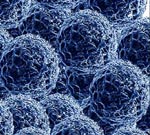

Idiomas:

Nanoparticles often have unique physical and chemical properties. For example, the electronic, optical, and chemical properties of nanoparticles may be very different from those of each component in the bulk. At the nanoscale, materials behave very differently compared to larger scales and it is still very difficult to predict the physical and chemical properties of particles of such a very small size.
The principal parameters of nanoparticles are their shape, size, surface characteristics and inner structure. Nanoparticles can be encountered as aerosols (solids or liquids in air), suspensions (solids in liquids) or as emulsions (liquids in liquids). In the presence of certain chemicals, properties of nanoparticles may be modified.

The composition of a specific nanoparticle can be very complex, depending on what interactions it has had with other chemicals or particles and on its lifetime. The chemical processes taking place on the surfaces of nanoparticles are also very complicated and remain largely unknown.
Nanoparticles have different ways of interacting with each other. They can remain free or group together depending on the attractive or repulsive interaction forces between them. These interactions remain difficult to characterize. Nanoparticles suspended in gas tend to stick to each other more readily than in liquids. More...

This summary is free and ad-free, as is all of our content. You can help us remain free and independant as well as to develop new ways to communicate science by becoming a Patron!